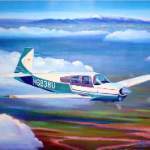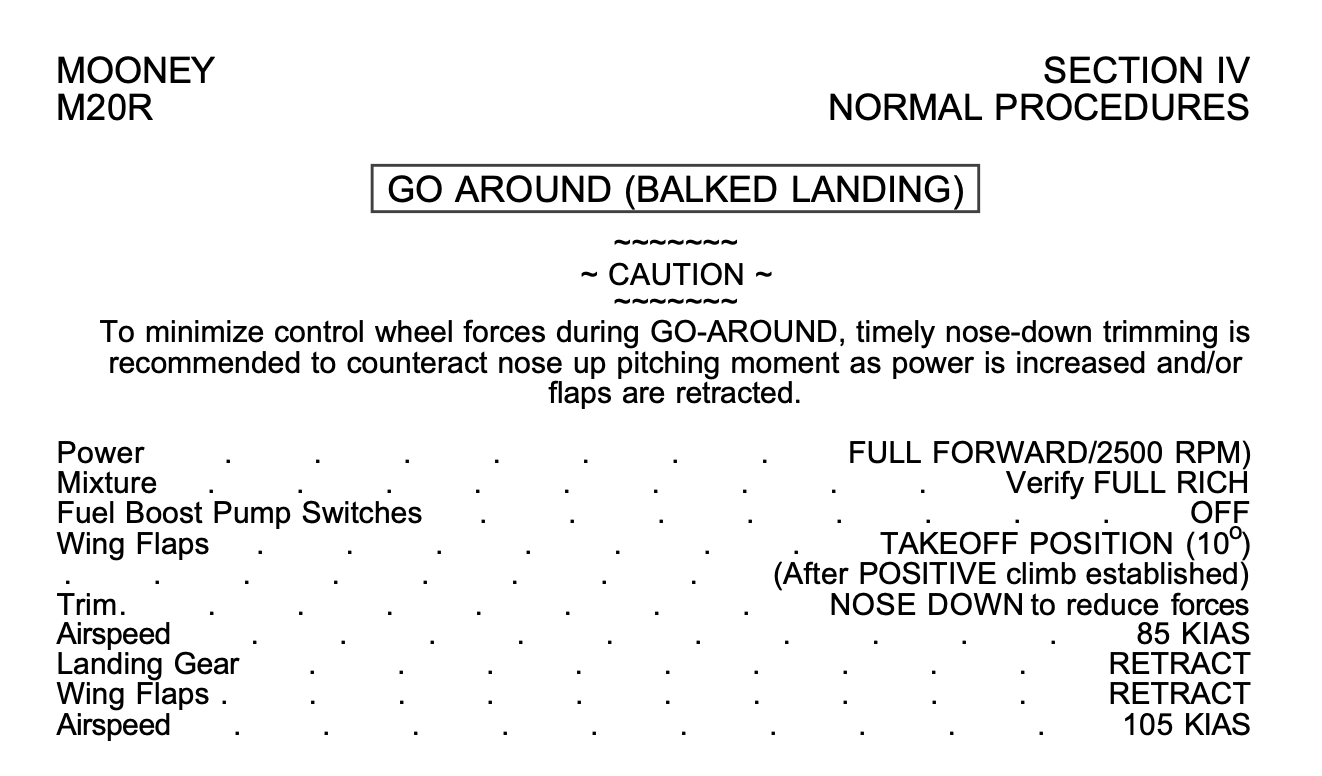-
Posts
250 -
Joined
-
Last visited
Content Type
Profiles
Forums
Blogs
Gallery
Downloads
Events
Store
Everything posted by Max Clark
-

Lasar Aviation Mooney Assurance Program - Really?
Max Clark replied to PeteMc's topic in General Mooney Talk
Dang, here I am putting along at 165 TAS in my Ovation -
Do you want to be talked in to, our out off getting a second comm? 2nd comm is really nice for a lot of things - backup, frequency management, being able to monitor ATIS/AWOS, easy flipping between the two, etc... But you don't *need* it for what you're doing, and it's your money you're spending so you have to value it or feel like you're missing something now. FWIW I put a GNC215 in my plane as a secondary NAV/COMM. I like having dual radios and my cockpit workflow takes advantage of it. I also like having the secondary NAV and keep a VOR dialed in as I fly.
-

Retract Gear or Flaps First in a Go Around ?
Max Clark replied to donkaye, MCFI's topic in Modern Mooney Discussion
-
@Rick Junkin thanks again for helping me figure this all out. He really went above and beyond just to help a rando on the internet figure this out. The EFIS Editor was nice to use but has a couple pretty big flaws. 1. It's missing validations that will prevent the .ace file from loading on the G3x. The G3x will just tell you "no valid checklist found", and not provide any helpful information beyond that. Opening the file in ACE Editor looked fine as well. Rick took the time to click through each and every checklist page to find errors. Again - cannot say enough thanks here. 2. It will let you / help you use fancy ASCII characters. For instance, it's pretty to have "70°" in the checklist file, but the G3x will not properly display the ° so it's a waste. Another word of advice. The POH checklists have a lot of extra text and details in them. I copied most over to the .ace to load into the G3x, but when displayed on the split screen there isn't enough real estate to show. I'm going to drastically cut down on the note/caution text in the future.
-
Includes a backup: "a simple Aithre fixed flow 47L oxygen bottle is provided with the kit for emergency backup. This lightweight carbon fiber composite bottle provides for 2 hours of continuous flow at approximately 0.5 LPM for an added layer of safety."
-
I had a few people send me photos of the Aithre Turbo Oxygen Maker after EAA this year. I'm putting this on my list of things to investigate down the road instead of replacing my O2 bottle in the tail.
-
$3-5k for annual checks out.
-
I'd love instruction to actually get a checklist .ace file to be recognized by the G3x. Creating the file and copying it to the root directory does not work.
-

FAA CARES: block ownership info on aircraft registry portal
Max Clark replied to shawnd's topic in General Mooney Talk
Is there a list of all the sites that we need to request removals with? -

FAA CARES: block ownership info on aircraft registry portal
Max Clark replied to shawnd's topic in General Mooney Talk
Took a few weeks for the FAA to update their site, all the third party sites still have my personal information listed (~3 months later). If anyone figures out the next step in this process please share! -
I have not, but I will when I have time
-
For single ownership in an LLC, anything specific I should be aware of with an operating agreement?
-
Real men don't use tow bars
-
Hi all, I'm looking for a mobile A&P for supervised owner assisted maintenance. Basically I want to learn more about my plane, and how to do maintenance myself. But I want someone that can show me how to do things the right way vs. figuring things out on YouTube. Thanks!
-
Really excellent tip
-
Agreed - I have the same thought
-
I punched my instrument ticket in October. Almost all of my training was S22T w/ Perspective+ flying what I called the video game. The Garmin autopilot is a dream to fly and even in real IMC was no problem flying down to minimums. Learning how to program (and more specifically reprogram) the avionics was way more complicated than I expected at the beginning. And of course remembering to switch the CDI based on the approach being flown has busted more than one check ride. I ended up with 20 hours in an AATD and was forced to "hand fly" in the sim a lot of the time. I'm so glad that my instructor did this with me. Was the main reason I was able to get ahead of the aircraft in the real world. Holding course and altitude while fumbling with the flight plan get's you task saturated in no time. My DPE had me setup for an ILS, then vectored me to a hold and had me re-setup for a VOR approach with Circle to Land. Oh and he failed the autopilot and PFD during this. Let me tell you I was happy I had the training I did, and hope to never have this situation in the real world. When I went to the Mooney Safety Pilot Proficiency Program my instructor made me hand fly (VFR and IFR) my plane. It was some of the best couple of hours of instruction I've had and really highlighted how dependent I'd become on autopilot during my instrument training. Now I make it a point to setup the autopilot but hand fly the plane more. I've been talking with instructors based in DFW and a big part of that is to hand fly instrument under the hood. "You don't rise to the occasion, you fall to the level of your preparation." I hope to never need to hand fly an approach in hard IMC, but I want to be ready if that ever happens.
-
So what the heck am I supposed to use then?
-
Interesting thanks!
-
Looking ahead in my schedule I’m going to have a ~70 period where I won’t be able to log any flight time. Anything specific I should do to prepare the plane for this? First thing that comes to mind is a battery minder - do I need one or two for an M20R? Is the BatteryMINDER the best to buy? Thanks!
-

Minimum prereq's 1) Mooney training; 2) Mooney Insurance
Max Clark replied to qwerty1's topic in General Mooney Talk
I'm really confused as to what you're already done, and what you're trying to accomplish? For clarity, do you have any flight training logged? I'm reading that you haven't yet started, but are looking at complex retract to purchase as a trainer for you to get your PPL in, but put into some sort of business entity to try and get a tax advantage, and maybe/probably not try to rent it out, and when you get 500 hours then go out and buy another plane. If this tracks my feedback below, otherwise ignore: Do not buy a Mooney to train in. Do not buy a plane to start your training - start your training first, when you get past solo then start thinking about buying a plane. Have > 100 hours before you think about buying something fast. Decision making is a skill that you have to develop when flying. Staying away from unnecessary risk and situations that can kill you is a great place to start. My $0.02 - take it or leave it. -
I just revisited this thread and thinking about buying the same table... the size and capacity (500 lbs) feel like a bit much. What about a motorcycle lift instead? https://a.co/d/4yleIyN Similar thought just smaller.
-
What is lowest green range mean?
-
Stock ovation = 2500 RPM Max I’m going to get the HP STC at next annual, but pretty sure the seller had this dialed back a touch to “save the engine”





